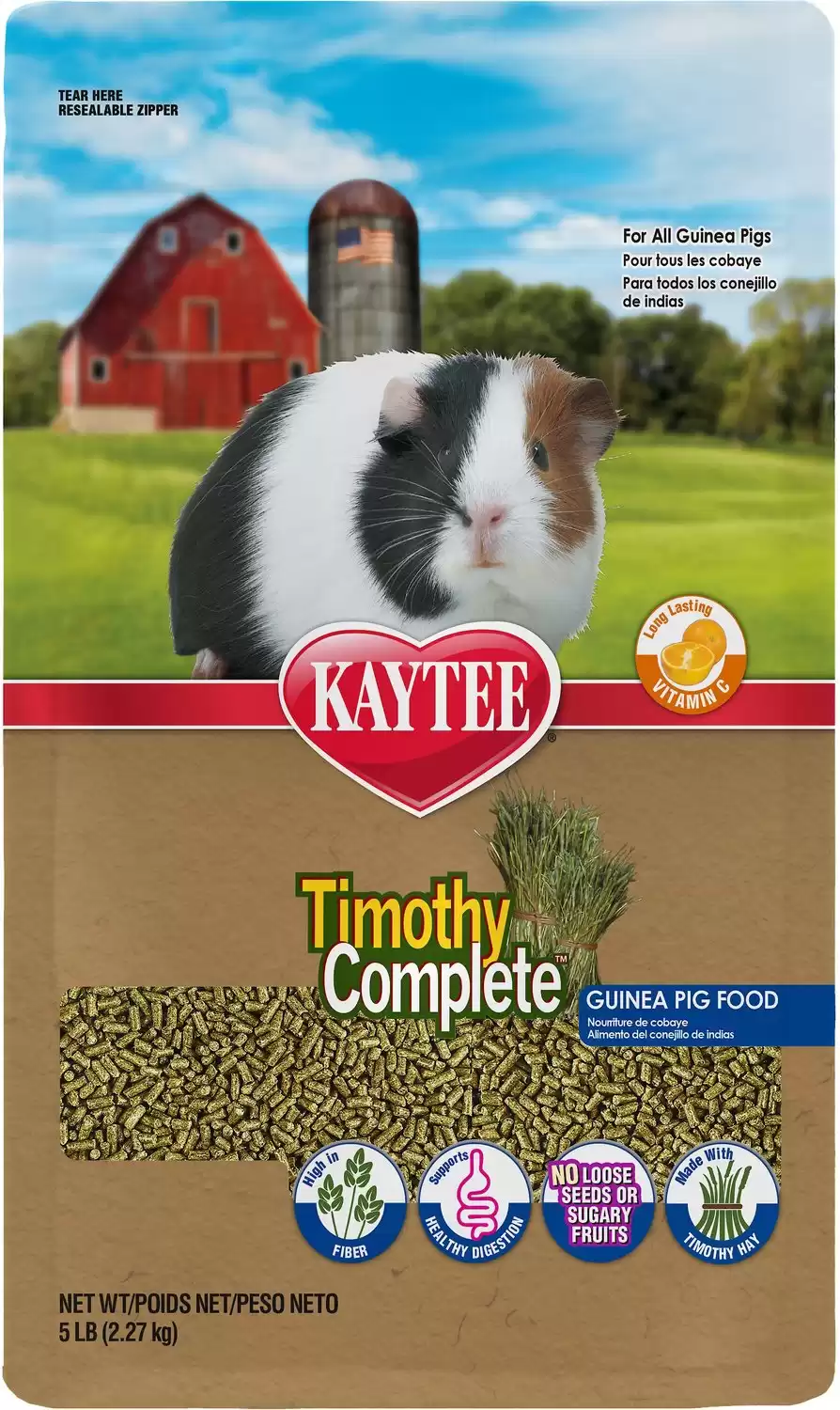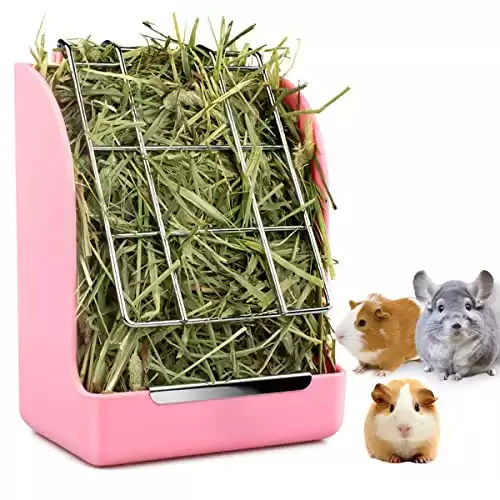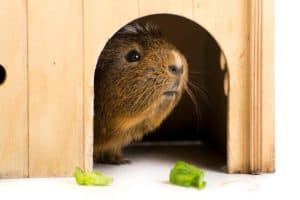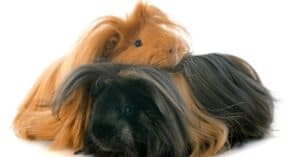Despite popular belief, guinea pigs are not from New Guinea and they aren’t even pigs. Many parents choose to get these little cavies as a first pet for their children, but guinea pigs take a lot of work.
In addition to cleaning their cage daily, they have a unique diet in comparison to other rodents. Today we’re going to dive into everything you need to know about these cute, squeaky critters and what you should feed them. One frequently asked question is “what vegetables can guinea pigs eat?”. We are going to answer that question in great detail today!
Guinea pigs, like rabbits, are genuine herbivores, albeit their gastrointestinal tract physiology and function are not as well studied as rabbits. Early in life, guinea pigs establish dietary preferences and are resistant to changes in food choices, shapes, or presentation. An unwillingness to eat might occur as a result of abrupt changes. Any dietary changes should be implemented gradually.
While guinea pigs should be given a cup of fresh vegetables every day, the vast majority of their diet consists of hay. Vegetables make up about 15% of their daily food intake, which is why it’s crucial to be giving them the right ones. So, what vegetables can guinea pigs eat? Let’s dive in and find out!
The Importance of Vitamin C
The typical guinea pig requires between 10 and 30 mg/kg of vitamin A each day to be healthy. Vitamin C deficiency in guinea pigs can be treated with up to 50 mg/kg/day. It’s a good idea to give an unwell guinea pig additional vitamin C on a regular basis. Vitamin C that is not absorbed by the body is expelled in the urine.
Because guinea pigs can’t make vitamin c naturally, they rely on getting it from their food. While some cavy owners opt for liquid vitamin c drops that get added to their water, we suggest giving it to them with delicious veggies.
The Best Vegetables for Guinea Pigs
The vegetables that are safe for guineas that have plenty of vitamin c for their little bodies include:
- Lettuce
- Parsnip
- Bell peppers
- Spinach
- Broccoli
- Celery leaves
- Tomatoes without stems or leaves
- Cucumber
- Zucchini
- Kale
- Cilantro/coriander
- Mustard greens
- Carrots
- Parsley
When it comes to feeding your guinea pigs daily, the only two vegetables they can be given daily are green bell peppers and romaine butterhead, or bib lettuce. Yellow and red bell peppers have too much vitamin C to be given daily and other types of lettuce don’t have enough nutritional value.
There are also tangy fruits that are packed with vitamin c that your guinea pig will enjoy. These include:
- Kiwi
- Grapes
- Pomelo
- Tangerines
- Strawberries
- Pineapple
- Mango
- Guava
- Oranges
The fruit on this list is beneficial for your guinea pig since it is high in vitamin C, but because it is also high in sugar, even if it is natural sugar, it should be restricted to once a day or a few times a week.
What Food to Avoid
As a guinea pig owner, it’s your duty to ensure you’re only giving them food they can safely consume. There are a plethora of foods that are toxic to cavies, even in small doses. Do NOT feed a guinea pig any of the following:
- Grains
- Meat
- Dried beans
- PeasMushrooms
- Potatoes
- Garlic
- Onions
- Peanut butter
- Crackers
- Avocado
- Daffodils
- Rhubarb leaves
- Foxglove
- Chocolate
- Seeds
- Bread
- Nuts
- Chili peppers
- Lilies
- Buttercups
- Sugar
- Shrubs such as privet or hemlock
Foods that produce gas, like cabbage and cauliflower, should be avoided by your cavy.
Iceberg lettuce, onions, and anything from the onion family, such as shallots, can induce a blood issue, garlic is hazardous, and avocado is excessively heavy in fat.
If you don’t gradually introduce new foods to your guinea pig’s diet, he may become unwell. They require time to acclimate to any new meal, so start carefully and gradually increase the amount of food you give them.
Pellets
Food pellets are a must-have for guinea pigs, and they cannot live without them. Depending on the brand, different amounts of Guinea pellets are recommended. However, 1/8 of a cup of pellets per piggy every day is usually advised.
Steer clear of pellets that have colorful additives as part of the mix. While guinea pigs like nibbling on just about everything, they rarely do so. When they’re full, they’re full, and they won’t eat till they pass out. We like to use a small automatic feeder. Decide whatever strategy you like because you’re the pet parent and know their characteristics best.
- Support dental health through natural chewing
- Made with Timothy Hay
- Added Prebiotics, Probiotics, and Antioxidants
- Veterinarian-recommended
Treats
Treats are a terrific way to get your pet to engage with you, but they should only be provided after your regular meals have been had. If you give your guinea pig too many goodies, he may refuse to eat his nutritious, vital meals.
It’s crucial to keep in mind that not all sweets are made equal! Many times in pet stores you’ll see colorful treats or snacks that use seeds advertised for guinea pigs. These should be avoided because they’re not nutritional for your cavy and can cause harm. Still to hay-based treats or fresh fruits or veggies.
Hay
With 80% of their diet being hay, it’s crucial to get the right type. They need to have access to fresh hay at all hours. Alfalfa hay can be given to pregnant guinea pigs or newborns. The rest of the time, Timothy Hay will make up the majority of their diet.
- Most recommended by veterinarians
- Sweet-smelling
- Contains no additives or binders
- Minimal dust
The high-fiber foundation of every guinea pig’s diet should be grass hay. Hay’s fiber helps herbivores like guinea pigs achieve their vital digestive health demands. Oxbow is one of the most trusted brands when it comes to high-quality hay that will meet your guinea pig’s nutritional needs.
In general, your guinea pig should consume a daily mound of hay twice its body size. They should be able to choose from a wide range of high-quality grass hays at any time. Hay aids in the prevention of obesity, dental problems, diarrhea, and boredom, among other things.
The teeth of your guinea pig cannot stop growing. Hay is necessary because it promotes proper chewing and tooth wear patterns, which helps to reduce the incidence of dental disease.
We suggest just changing the hay in your guinea pig’s environment when it is filthy, as replenishing it might encourage selective eating. Piggies often go to the bathroom all over their cage, including where they eat. Cleaning up soiled hay is essential to prevent critical health disorders, such as upper respiratory infections.
- Made from durable plastic
- Suspended on the cage bars
- Easy to clean
- Features a metal grille
Water
Guinea pigs love to stay hydrated. Give your guinea fresh water in a sealed rodent water bottle every day. It’s best to have one water bottle for every two guinea pigs. Water is necessary for guinea pigs, as it is for practically every living creature in the world.
Avoid adding any vitamins, enzymes, or additives to their water. It’s not uncommon for cheap water bottles to leak, so make sure you invest in a high-quality one that will keep their bedding dry. Drinking should be given in rodent-specific water bottles, and they should have 24-hour access to fresh, clean water.
This entails filling the bottle with new water once a day and ensuring that the water bottle is in good functioning order and has not run out. If your water bottle is regularly empty during the day, consider purchasing a larger bottle.
Best Vegetables to Feed Guinea Pigs FAQs (Frequently Asked Questions)
What are guinea pigs favorite food?
While guinea pigs lot eating, the most popular foods with guinea pigs tend to be bell peppers, carrots, and leafy greens. It’s amazing how their unique personalities show which foods they do or do not enjoy. One guinea pig may love tomatoes and another won’t even eat them.
Is it possible for guinea pigs to eat spinach every day?
Don’t give your guinea pigs spinach every day. If you do, you’ll virtually certainly end up with ill piggies. Despite its numerous nutrients, it might lead to bladder stones or sludge. This is a very prevalent problem in guinea pigs.
How do I feed my guinea pig vegetables?
Guinea pigs will take most veggies in many forms. It’s best for everyone to chop up peppers, cucumber, broccoli, and carrots. Spinach and other leafy greens they tend to eat in their natural form. There’s no reason to use a plate or any other type of serving dish.
Can guinea pigs eat a lot of blueberries?
We recommend giving each guinea one or two tiny blueberries twice a week. This will be sufficient to provide them with the nutritional advantages of blueberries while avoiding the health hazards associated with overfeeding. You may feed your guinea a variety of fruits in addition to blueberries as rewards to keep things interesting.
Thank you for reading! Have some feedback for us? Contact the AZ Animals editorial team.







